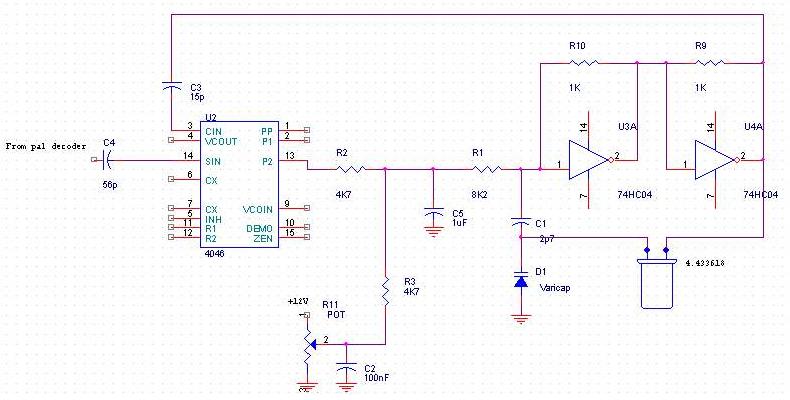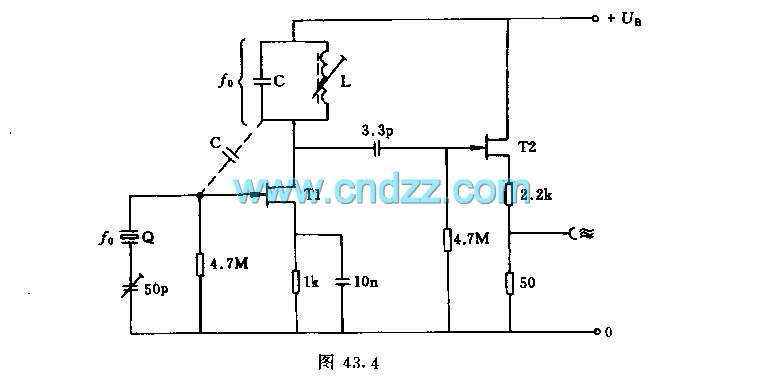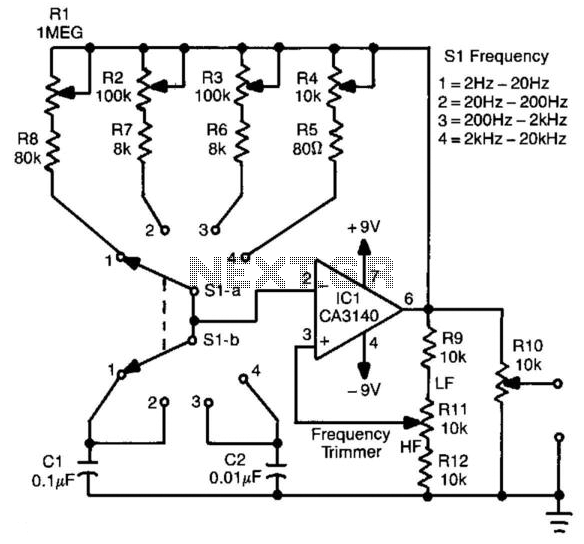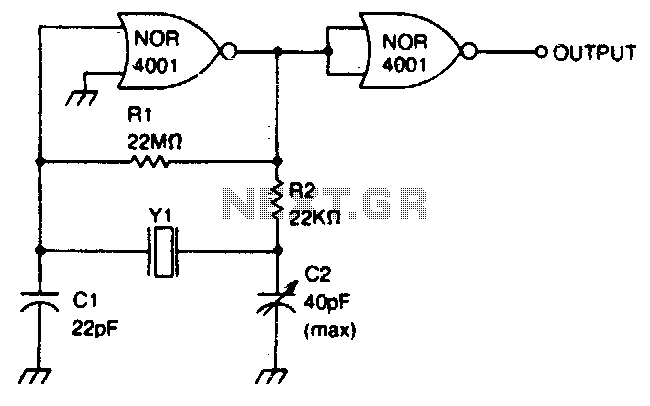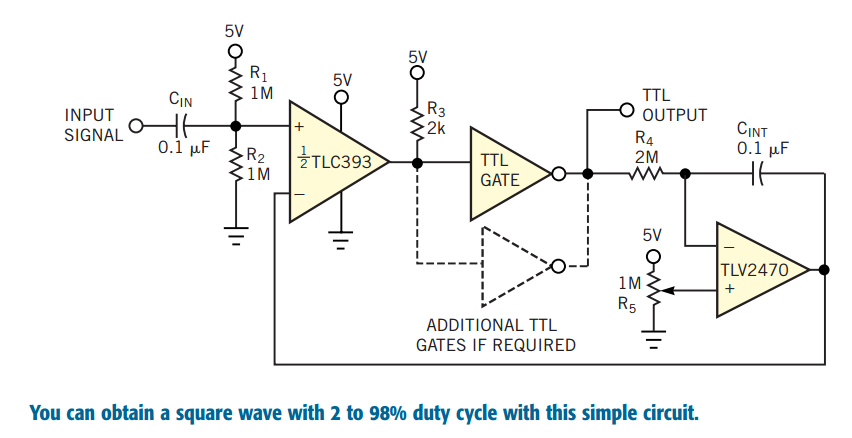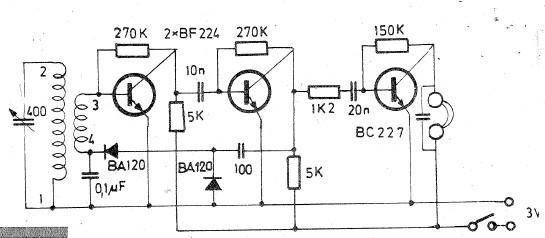
Sine wave code practice oscillator
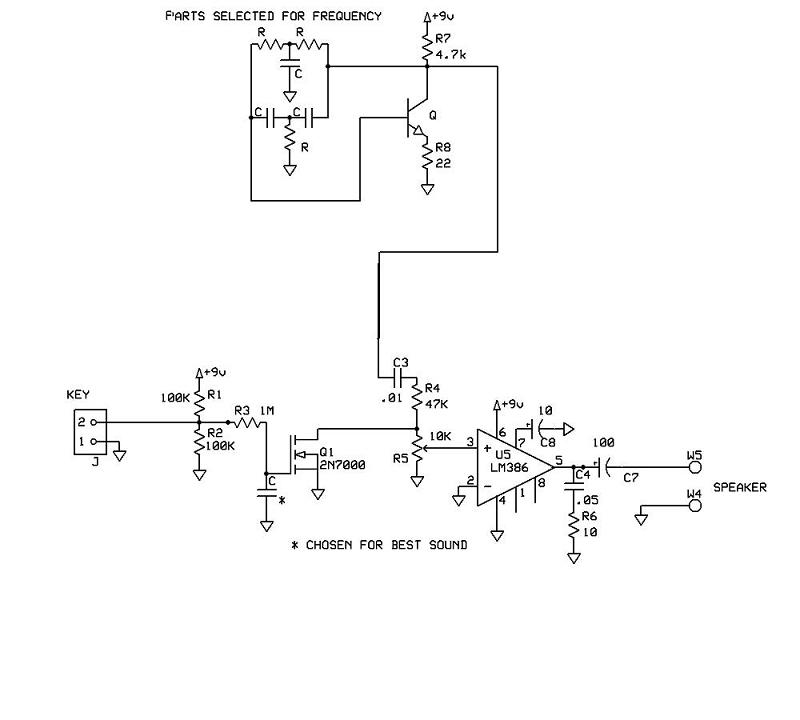
A schematic for a code practice oscillator is needed, which can be connected to a keyer. The desired setup involves using a Picokeyer, allowing the oscillator to be plugged into the key jack of the Picokeyer. The output should drive an 8-ohm speaker, and the tone must be adjustable. Power supply could be a 9V battery. Numerous references to square wave code oscillator circuits exist, but only one sine wave oscillator circuit has been found, although the source is currently unknown.
The requested schematic for a code practice oscillator is designed to facilitate Morse code practice by generating audio tones that can be adjusted for frequency. This oscillator should be compatible with a Picokeyer keyer, enabling seamless integration.
The circuit typically employs a simple sine wave oscillator configuration, which may include components such as operational amplifiers or a function generator IC to produce the desired sine wave output. The oscillator's frequency can be modulated using a variable resistor or potentiometer, allowing the user to adjust the tone to their preference.
For the output stage, the circuit should include a power amplifier to drive an 8-ohm speaker effectively. This can be achieved using a transistor or an integrated audio amplifier IC, which will take the oscillator's output and amplify it to a suitable level for audible sound production.
Powering the circuit with a 9V battery is a practical choice, providing sufficient voltage while maintaining portability. Proper decoupling capacitors should be included to ensure stable operation and reduce noise in the circuit.
Overall, the schematic will consist of an oscillator section, an adjustable tone control, and an output stage capable of driving an 8-ohm speaker, all powered by a 9V battery, creating an effective tool for Morse code practice.I`m looking for a schematic for a code practice oscillator that can be hooked up to a keyer. I have a Picokeyer so I`d like to be able to just plug the oscillator into the key jack of the Picokeyer. Output would be to an 8 ohm speaker. Tone should be adjustable. Power could be a 9v battery. I`ve found lots of references to square wave code oscillator circuits. I found only one for a sine wave oscillator. Unfortunately, I can`t remember where I saw it and haven`t been able to find it again. .. 🔗 External reference
The requested schematic for a code practice oscillator is designed to facilitate Morse code practice by generating audio tones that can be adjusted for frequency. This oscillator should be compatible with a Picokeyer keyer, enabling seamless integration.
The circuit typically employs a simple sine wave oscillator configuration, which may include components such as operational amplifiers or a function generator IC to produce the desired sine wave output. The oscillator's frequency can be modulated using a variable resistor or potentiometer, allowing the user to adjust the tone to their preference.
For the output stage, the circuit should include a power amplifier to drive an 8-ohm speaker effectively. This can be achieved using a transistor or an integrated audio amplifier IC, which will take the oscillator's output and amplify it to a suitable level for audible sound production.
Powering the circuit with a 9V battery is a practical choice, providing sufficient voltage while maintaining portability. Proper decoupling capacitors should be included to ensure stable operation and reduce noise in the circuit.
Overall, the schematic will consist of an oscillator section, an adjustable tone control, and an output stage capable of driving an 8-ohm speaker, all powered by a 9V battery, creating an effective tool for Morse code practice.I`m looking for a schematic for a code practice oscillator that can be hooked up to a keyer. I have a Picokeyer so I`d like to be able to just plug the oscillator into the key jack of the Picokeyer. Output would be to an 8 ohm speaker. Tone should be adjustable. Power could be a 9v battery. I`ve found lots of references to square wave code oscillator circuits. I found only one for a sine wave oscillator. Unfortunately, I can`t remember where I saw it and haven`t been able to find it again. .. 🔗 External reference
